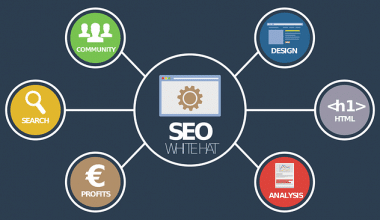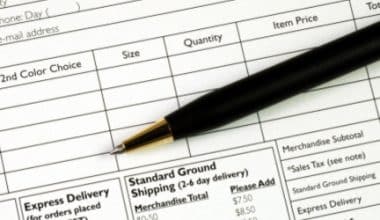Promotional materials play a pivotal role in the realm of marketing, acting as powerful tools that can help businesses effectively showcase their products and services to their target audience. Whether it’s through eye-catching designs, compelling content, or innovative formats, these materials have the potential to leave a lasting impression and drive success for companies. From business promotional materials to promotional material printing and event promotional materials, crafting an impactful strategy that utilizes these resources can significantly enhance brand visibility, customer engagement, and overall business growth.
What Is Promotional Material?
Promotional material refers to a wide range of tools and resources that businesses utilize as part of their marketing campaigns to promote their products or services. These materials encompass various formats such as brochures, flyers, banners, posters, and other visually appealing aids that are designed to captivate and inform potential customers.
These materials are carefully crafted with strategic use of colors, graphics, and persuasive messaging, all aimed at grabbing the attention of the target audience and creating interest in the offerings. However, by employing captivating visual elements and engaging content, promotional materials effectively communicate the unique selling points of a product or service, enticing customers to take action. Additionally, they serve as tangible reminders of a brand’s offerings long after the initial interaction, reinforcing brand recognition and loyalty among customers. Overall, promotional materials play a crucial role in driving brand visibility, customer engagement, and ultimately, business growth.
Promotional Materials Marketing
Promotional marketing materials have to do with the strategic planning, creation, and distribution of various materials to promote products or services. Additionally, it entails utilizing different channels, such as digital platforms and print media, to reach the target audience effectively. With meticulous research and analysis, businesses can identify their ideal customers and tailor promotional materials accordingly. By employing compelling visuals, persuasive messaging, and targeted distribution strategies, companies can also maximize the impact of their promotional campaigns. Furthermore, monitoring and analyzing the effectiveness of these materials through metrics and feedback allows for continuous improvement and optimization. Overall, promotional marketing materials are an essential aspect of a comprehensive marketing strategy, helping businesses enhance brand visibility, attract new customers, and drive growth.
Business Promotional Materials
Business promotional materials are a wide range of resources that are used to promote a company’s products, services, and brand. However, brochures, business cards, promotional goods, website content, and social media campaigns are examples of such materials. Companies can also successfully explain their value proposition, showcase their unique offers, and separate themselves from the competition by deploying business promotional materials. These materials assist firms in establishing a lasting impression on potential customers and building brand recognition through thoughtful design, appealing content, and consistent branding. They also act as tangible reminders of a company’s knowledge, professionalism, and dedication to satisfying the demands of its customers. As a result, business promotional materials are crucial in recruiting new customers, cultivating client loyalty, and ultimately driving business growth.
Promotional Materials Printing
Promotional printing materials involve the production of various marketing materials, such as brochures, flyers, and posters, through professional printing services. By utilizing high-quality printing techniques, businesses can also ensure that their promotional materials are visually appealing and make a strong impact on their target audience.
Moreover, working with experienced printing providers allows for customization, efficient production, and timely delivery of these materials. Whether it’s offset printing, digital printing, or other advanced techniques, the goal is to achieve vibrant colors, sharp graphics, and crisp text that effectively convey the intended message. With attention to detail and the use of appropriate paper stocks and finishes, promotional material printing can elevate the overall quality and professionalism of a company’s marketing efforts. Finally, these well-printed materials contribute to enhancing brand reputation, attracting attention, and generating favorable responses from potential customers.
Event Promotional Materials
Event promotional materials are crucial in creating awareness and generating excitement for upcoming events. These materials, including event flyers, posters, and social media graphics, effectively convey event details and key messaging. However, utilizing vibrant designs, captivating visuals, and persuasive content, event promotional materials grab the attention of the target audience and entice them to attend. Moreover, personalized invitations, event programs, and Branded merchandise further enhances the overall event experience and leaves a lasting impression on attendees.
Additionally, leveraging various distribution channels, such as email campaigns, online advertisements, and physical distribution, ensures broad reach and maximum event attendance. With meticulous planning and execution, event promotional materials serve as powerful tools for event organizers to create a buzz, generate anticipation, and drive ticket sales or registrations. Finally, these materials play a pivotal role in the success of an event by effectively communicating its value, and unique selling points, and enticing potential attendees to be a part of the experience.
What Are the 4 Types of Promotion?
Advertising, personal selling, sales promotion, and public relations are the four methods of promotion.
#1. Advertising
Advertising is the paid advertising of products or services through various media platforms. It uses a variety of outlets to reach a large audience and raise brand awareness, including television, radio, print, online platforms, and social media. Furthermore, advertising allows businesses to deliver critical information, highlight product qualities, and encourage potential customers to make a purchase.
#2. Personal Selling
Personal selling is a one-on-one engagement between a salesman and a prospective customer. Sales personnel create relationships, learn customer needs, and offer customized solutions through face-to-face meetings, phone conversations, or video conferencing. However, this sort of promotion enables individualized communication, demonstrations, and real-time resolution of consumer issues, boosting the likelihood of a successful sale.
#3. Promotion of Sales
Short-term incentives aimed at boosting instant sales are included in sales marketing. Discounts, coupons, rebates, free samples, and contests are all examples of this. Sales promotions instill a sense of urgency in clients, encouraging them to take advantage of limited-time offers or special discounts. These strategies are intended to attract new customers, enhance sales volume, and also promote client loyalty.
#4. Public Relations
Public relations is the management of a company’s reputation and image through deliberate public and media relations. Press releases, media relations, sponsorships, involvement in the community, and crisis management are all examples of public relations activity. Public relations activities also help an organization gain credibility, trust, and goodwill by fostering beneficial relationships and producing positive press.
In conclusion, these four different promotion strategies give a variety of ways to connect with and involve target audiences, whether through paid advertising, one-on-one encounters, transient incentives, or strategic communication management.
What Is a Good Promotion Material Like?
Good promotional material is visually appealing, persuasive, and consistent with the brand’s messaging and identity. It should effectively capture the attention of the target audience, communicate key messages clearly, and also create a lasting impression. Furthermore, good promotional material is well-designed, utilizing attractive visuals, engaging content, and a cohesive layout to maximize its impact. It should also be informative, providing relevant details about the product or service and its benefits to the customers.
Additionally, good promotional material is tailored to the target audience, considering their preferences, needs, and demographics. It should be memorable, leaving a positive and distinctive impression in the minds of potential customers. Moreover, good promotional material should have a clear call to action, guiding the audience on how to take the desired next step, such as making a purchase or contacting the company. Lastly, it should be adaptable to different formats and channels, ensuring its effectiveness across various platforms, whether it’s digital media, print materials, or social media campaigns.
What Are 5 Examples of Promotional Materials?
The five examples of promotional materials are brochures, business cards, banners, promotional merchandise, and social media graphics.
#1.Brochures
Brochures are informative materials that provide detailed information about a company, product, or service. They typically have folded documents that highlight key features, benefits, and contact details.
#2. Business Card
Business cards are compact promotional tools that contain essential information about an individual or business, including name, title, contact details, and logo. They serve as a convenient way to exchange information and leave a lasting impression.
Banners are large displays made of vinyl or fabric materials, commonly used for events, trade shows, or storefront advertising. They capture attention and convey messages in a visually impactful manner.
#4. Promotional Merchandise
Promotional merchandise refers to branded items like pens, t-shirts, keychains, or mugs that are distributed as freebies or incentives to promote a company or its products. They serve as tangible reminders of the brand.
Social media graphics are visually appealing images designed specifically for digital platforms such as Facebook, Instagram, or Twitter. They are created to promote products, events, or special offers to engage online audiences.
Each of these promotional materials plays a unique role in marketing strategies, providing businesses with various options to effectively communicate their message, increase brand visibility, and engage with their target audience.
What Are the 7 Promotional Elements?
The seven promotional elements, or promotional mix, are advertising, personal selling, sales promotion, public relations, direct marketing, online marketing, and sponsorship.
#1. Advertising
Advertising involves paid communication through various media channels to promote products or services. It utilizes mediums such as television, radio, print, online platforms, and social media to reach a wide audience and create brand awareness.
#2. Personal Selling
Personal selling is a direct interaction between a salesperson and potential customers. Through face-to-face meetings, phone calls, or video conferences, sales representatives build relationships, understand customer needs, and offer tailored solutions.
#3. Sales Promotion
Sales promotions include short-term incentives designed to stimulate immediate sales. This can also be in the form of discounts, coupons, rebates, free samples, or contests. Sales promotions create a sense of urgency and encourage customers to take advantage of limited-time offers or special deals.
#4. Public Relations
Public relations is concerned with the management of a company’s image and reputation through strategic contact with the general public and the media. Press releases, media relations, sponsorships, community involvement, and crisis management are all examples of public relations activity.
#5. Direct Marketing
Direct marketing involves communicating directly with individual customers through channels like email, direct mail, telemarketing, or SMS. It aims to generate immediate responses and build personalized relationships with customers.
#6. Online Marketing
Online marketing includes promotional operations carried out using digital platforms such as websites, search engines, social media, email marketing, and online advertisements. Businesses can also use it to reach a large online audience, communicate with customers, and generate conversions.
#7. Sponsorship
In exchange for brand exposure and association, sponsors support events, organizations, or individuals. To increase brand recognition and engage with target audiences, companies can sponsor sports teams, cultural events, charitable activities, or high-profile personalities.
These seven promotional elements provide a comprehensive approach to reaching and engaging target audiences, utilizing a mix of communication channels, strategies, and techniques.
What Makes a Good Promotional Product?
A good promotional product possesses several key elements that contribute to its effectiveness.
- It should be relevant and aligned with the target audience’s interests, needs, and preferences.
- A good promotional product is practical and useful in everyday life, ensuring it stays in the recipient’s possession and increasing brand exposure.
- It should be of high quality, reflecting positively on the brand and creating a positive impression.
- A good promotional product is visually appealing, with an attractive design and branding that effectively capture attention.
- It should also have a long-lasting impact, whether through durability or a memorable message, reinforcing brand recognition over time.
- Customization and personalization options allow for a tailored approach, making the promotional product feel more special and valuable to the recipient.
- A good promotional product aligns with the brand’s values and messaging, reinforcing brand identity and creating a cohesive brand experience.
By incorporating these elements, a promotional product becomes a powerful tool for enhancing brand visibility, building customer loyalty, and driving business growth.
How Do You Make Effective Promotional Materials?
To create effective promotional materials, several strategies can be employed. Transition words like “
- It’s crucial to clearly define the goals and target audience to ensure alignment with their needs.
- Additionally, conducting thorough market research helps identify key messages, differentiators, and effective communication strategies.
- Moreover, using compelling visuals, persuasive content, and a cohesive design enhances the overall impact of the materials.
- Furthermore, incorporating a strong call to action prompts the audience to take the desired next step, whether it’s making a purchase or contacting the business.
- Moreover, utilizing consistent branding elements, such as logos, colors, and fonts, ensures brand recognition and reinforces brand identity.
- Furthermore, testing and refining the materials based on feedback and analytics allows for continuous improvement and optimization.
- Lastly, staying up to date with current design trends and technological advancements can help create modern and relevant promotional materials.
By employing these strategies, businesses can create promotional materials that effectively engage the audience, convey key messages, and drive desired actions.
FAQs
What exactly are promotional methods?
Advertising is the most common kind of promotion. Public relations and sponsorship are both important. Individual selling. Marketing through direct contact.
What is the purpose of promotional materials?
Promotional products are required by businesses in order to reach out to potential customers and clients. This low-cost marketing strategy attracts new clients. You can locate inexpensive and functional goods that will captivate people’s attention and help you attract new clients over time.
How can promotions entice people to buy?
Sales promotions are commonly utilized as a price inducement to attract budget-conscious buyers who are not interested in purchasing things at regular pricing.
Related Articles
- CREDIT CARDS WITH 0 INTEREST: 17 Best Options in 2023
- Promotional Pricing Strategy: Definitive Guide for Price Promotion
- BEST PRODUCT PROMOTION COMPANIES IN 2023: Top 13 Picks
- PRODUCT PROMOTION: Best Promotions Examples & Ideas
- Promotion strategy: Best easy practices and all you need (+ free pdf)






